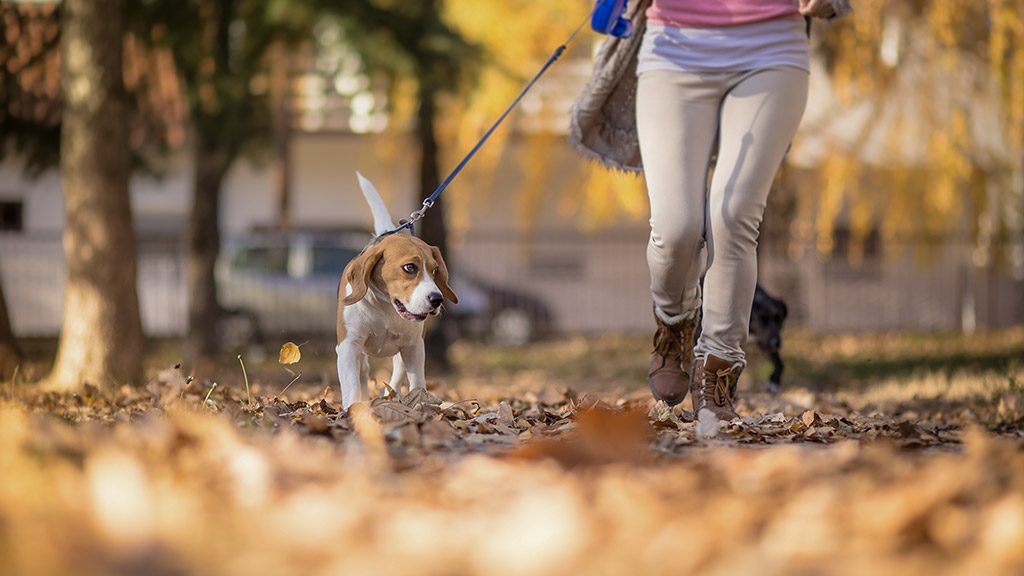It is critical for anyone who interacts with animals in a professional or voluntary capacity to have a sound understanding of animal ethics and the principles of animal welfare. As an animal care worker, it is your responsibility to behave ethically and ensure that you and your workplace uphold the principles of animal welfare at all times.
Animal ethics are a set of guidelines that govern the way people interact with and manage animals. You can think about ethical behaviour as ‘doing the right thing’ or ‘doing what is best’ for the animal.
Humans have a duty of care to protect animals. Where a person does not meet his or her obligations to animals in his or her care, animals may suffer.Australian Veterinary Association, n.d.
You can be confident that you are upholding animal ethics if you follow the principles of animal welfare.
The Five Freedoms
Australia doesn’t have federal legislation or a country-wide set of animal welfare principles. Each State and Territory follow their own guidelines. However, the Australian Animal Welfare Strategy “sets broad national goals on animal welfare. It also provides a framework for sustainable, scientifically–based improvements in animal welfare” (Department of Agriculture, Fisheries and Forestry 2019).
The Australian Animal Welfare Strategy accepts the internationally recognised definition of animal welfare posed by the World Organisation for Animal Health (WOAH). The WOAH (n.d.) defines Five Freedoms to describe the conditions animals should experience when being managed by people.
Freedom from hunger, malnutrition and thirst
Animals should have unrestricted access to clean, fresh water and an appropriately nutritious diet that maintains good health.
Freedom from fear and distress
Animals should be kept in conditions and treated in a way that avoids suffering. This includes:
- appropriate management for the species, such as avoiding exposure to natural predators or incompatible animals
- minimising handling and using safe, low stress handling techniques when interactions are necessary
- a quick and human death if the animal is for slaughter.
Freedom from heat stress or physical discomfort
Animals should be housed in a species-appropriate environment, including shelter from the elements (wind, rain or extreme heat or cold) and a safe and comfortable resting place.
Freedom from pain, injury and disease
Animals should have access to housing that is unlikely to cause injury, and quick and accurate diagnoses and treatment of illnesses and injuries. If it has been determined that euthanasia is the only option, it should be quick and humane to end an animal’s suffering.
Freedom to express normal patterns of behaviour
Animals should be able to behave in a manner that is safe and typical of their species. This includes the opportunity to:
- move freely – sit, stand, turn around, lie down and perform normal bodily functions such as defecating
- groom
- play
- socialise with other individuals of the same species
- forage for food.
Review the Five Freedoms in the following video, Higher Biology - What Are The Five Freedoms? (3:10 mins), which provides examples of upholding the freedoms in agricultural, domestic and exhibited contexts.
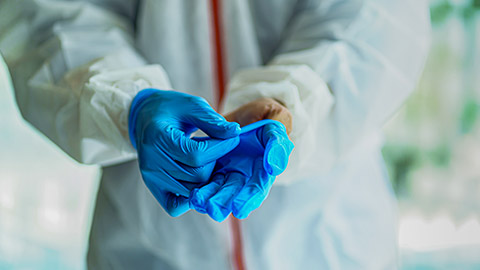
Health and safety legislation in animal care workplaces
Everyone in the workplace is responsible for ensuring the health and safety of themselves and others. In Australia, work health and safety (WHS) laws aim to reduce the occurrence and effects of workplace injuries on Australian workers and industries.
WHS legislation is largely administered at a State and Territory level. The following table provides links to each of the key health and safety legislation for each State and Territory.
| State or Territory | Health and Safety Legislation |
|---|---|
| Australian Capital Territory | |
| New South Wales | |
| Northern Territory |
Work Health and Safety (National Uniform Legislation) Act 2011 Work Health and Safety (National Uniform Legislation) Regulations 2011 |
| Queensland | |
| South Australia | |
| Tasmania | |
| Victoria | |
| Western Australia |
However, the Australian Work Health and Safety Strategy 2023–2033 is an overarching approach to WHS and a plan for delivering key WHS improvements across the country within the next 10 years. It outlines several targets, including reducing:
- worker fatalities
- incidents resulting in:
- permanent impairment
- extended time off work (1 or more weeks)
- incidence of work-related respiratory disease (Safe Work Australia 2023).
Individual workplaces within the animal care industry will have their own codes of practice and WHS guidelines. So, it is important that you are aware of the specific requirements of your role and the WHS responsibilities in your particular workplace.
PCBU responsibilities
A PCBU is a person conducting a business or undertaking. This Safe Work Australia term is used to mean a:
- company
- unincorporated body or association
- sole trader
- self-employed person (Safe Work Australia n.d.).
PCBUs are responsible for:
- providing a safe working environment for themselves and all other employees
- providing safety procedures and safe systems for work
- maintaining machinery, facilities and equipment in safe, good working order
- storing and using substances in the workplace according to the manufacturer's instructions
- providing education, instruction, supervision and training to ensure each employee is knowledgeable of and safe from injury and risks to health
- reporting all notifiable incidents as soon as they become aware.
A notifiable incident is a situation that results in death or causes serious injury or illness. A near miss of death or serious injury is considered a dangerous incident. A PCBU must report a dangerous incident, even if no one is injured. The following table outlines the information required when reporting a notifiable incident (Safe Work Australia 2015).
| Information required | Explanation |
|---|---|
| Overview | An overview of the incident, including a classification – death, serious injury or illness, or dangerous incident. |
| When it happened | Date and time of the incident. |
| Where it happened | The address of the incident as well as a description of the specific location at that address. |
| What happened | A detailed description of the incident |
| Who it happened to | Injured person’s name, date of birth, address, contact number, job title and relationship to the PCBU. |
| How and where they are being treated | Detailed description of the injury or illness, first aid administered and details of where the person has been taken for further treatment. |
| Who the PCBU is | The legal and/or trading name, address, contact details and ABN/CAN of the business. |
| What is being done | Description of the action taken, or being planned, to prevent the recurrence of the incident. |
| The person reporting the incident | Name, contact phone number, and job title of the person completing the notification form. |
Review the ABC Boarding Incident Report (pdf) form as an example.
Employee responsibilities
Employees are also responsible for maintaining a safe workplace. In particular, employees are responsible for:
- working safely so as not to damage work equipment or facilities
- using and storing equipment, products, chemical and medications as per manufacturer’s instructions
- taking reasonable care for their own health and safety, for example, using personal protective equipment (PPE) if required
- taking reasonable care for the health and safety of others
- comply with any reasonable instructions, policies, and procedures provided by the employer, business or WHS representative
- being involved in the processes of checking for hazards, making hazard and risk assessments and controlling risks
- Reporting hazards or incidents to the Supervisor and escalating the issue if necessary.
Employees are also responsible for reporting any hazards, illnesses or injuries, unsafe equipment or practices, or potential notifiable incidents as soon as possible. In most instances, you should report WHS concerns to your manager or WHS Officer. However, if you feel like your concerns are not being addressed appropriately or in a timely manner, you can report them directly to your local regulator.
The following table lists the contact details for the local regulator in each State and Territory.
| State/Territory | Regulator | Phone | Website |
|---|---|---|---|
| Australian Capital Territory | WorkSafe ACT | 02 6207 3000 | www.worksafe.act.gov.au/ |
| New South Wales | SafeWork NSW | 13 10 50 | www.safework.nsw.gov.au/ |
| Northern Territory | NT WorkSafe | 1800 019 115 | worksafe.nt.gov.au/ |
| Queensland | WorkSafe Queensland | 1300 369 915 | www.worksafe.qld.gov.au/ |
| South Australia | SafeWork SA | 1800 777 209 | www.safework.sa.gov.au/ |
| Tasmania | WorkSafe Tasmania | 1300 366 322 (Tas) 03 6233 7657 (External) | www.worksafe.tas.gov.au/ |
| Victoria | WorkSafe Victoria | 1800 136 089 | www.worksafe.vic.gov.au/ |
| Western Australia | WorkSafe WA | 1300 307 877 | www.commerce.wa.gov.au/WorkSafe/ |
Assess the environment
It is important to assess the situation and ensure the environment is safe and secure before interacting with an animal. For example, you are Cattery Team Leader at ABC Boarding, an animal boarding facility. You are about to take a cat to be groomed. You would need to check the cat’s enclosure, the grooming room and the path you intend to use between the two locations for hazards before you even approached the cat.
Working with animals is inherently risky. They can’t speak to you, so you must be able to identify and interpret their behaviour quickly and accurately to predict how they may react during the interaction. A good understanding of animal behaviour and a strong sense of empathy helps reduce the risks associated with working with animals.
Identify and minimise hazards and risks
Remember that you have a duty of care to yourself, the animal and to other people and animals not involved in your interaction with the animal. So, when identifying risks, you need to consider the risks to the animal you are working with, the risks to other staff and animals in the area, as well as the risks to yourself.
Four of the most common hazards associated with working with animals are:
- Bites, scratches and other injuries
- Manual handling and slips, trips and falls
- Infectious disease and zoonoses
- Animal compatibilities.
A thorough assessment of the physical environment and the individual animal will help you identify and minimise the risks.
Bites, scratches and other injuries

A common hazard of working with animals is being injured by the animal you are working with. Animal behaviour is difficult to predict and may change without warning, especially if the animal is distressed. Bites, scratches and kicks are common. Working with larger animals, such as horses, creates an additional risk of being crushed.
To minimise the risk to yourself and maintain animal ethics, only handle animals when necessary. When you do handle an animal, ensure you use the appropriate safe and low stress handling techniques for that animal.
You can minimise the risk of injury caused by animals by:
- interpreting the animal’s behaviour and emotional state before attempting to handle it
- using appropriate PPE
- using appropriate handling and restraint equipment
- using appropriate handling techniques.
Manual handling injuries and slips, trips and falls
Manual handling is common in the animal care industry. You will likely be required to lift and carry animals, stock, equipment and animal care products.
Your back is particularly at risk of manual handling injuries. Follow the specific manual handling procedures outlined by your workplace. To reduce the risk of manual handling injuries:
- “Lift and carry heavy loads correctly by keeping the load close to the body and lifting with the thigh muscles.
- Never attempt to lift or carry loads if you think they are too heavy.
- Pushing a load (using your body weight to assist) will be less stressful on your body than pulling a load.
- Use mechanical aids or get help to lift or carry a heavy load whenever possible.
- Organise the work area to reduce the amount of bending, twisting and stretching required.
- Take frequent breaks.
- Cool down after heavy work with gentle, sustained stretches.
- Improve your fitness – exercise regularly to strengthen muscles and ligaments, and reduce excess body fat.
- Warm up cold muscles with gentle stretches before engaging in any manual work” (Better Health Channel 2017).
Review the following video, 9 Safe Manual Handling Techniques (1:07 min), for a demonstration of how to lift, hold and carry a load safely.
Slips, trips and falls are common in all workplaces. Serious slips and trips may result in strained muscles or broken bones. Back injuries are often caused during a slip or fall. Uneven or irregular surfaces or contaminants and obstacles on the surface typically cause slips and trips.
To minimise the risk of slips, trips and falls:
- Wear appropriate footwear
- Ensure all surfaces are clean, dry and free from obstacles
- Where possible, ensure floor surfaces are maintained and in good repair
- Where possible, highlight changes in surface heights
- Provide adequate lighting
- Where appropriate, provide support, such as handles and rails.
Infectious disease and zoonoses

Infectious diseases are illnesses that can spread from one individual to another, such as canine infectious tracheobronchitis (kennel cough). Depending on the disease and the individual animal, infectious diseases may be life-threatening. As part of upholding the animal welfare principle of freedom from pain, injury and disease, you are responsible for minimising the risk of infectious disease spreading between animals. You can prevent the spread of infectious diseases between different animals by following the infectious control procedures of your workplace. This may include:
- Providing vaccinations, or asking for evidence of vaccinations, where appropriate
- Preventing contact between infected and healthy individuals
- Maintaining high personal hygiene – washing your hands and changing your gloves and other personal protective equipment between working with different individual animals
- Following sanitation processes – washing and sterilising bedding, water bowls, enrichment toys, training mats, other equipment and surfaces, if necessary, between uses
- Cleaning up urine, faeces and blood quickly and disposing correctly
- Following proper food preparation procedures
- Carrying out frequent health checks to identify unwell individuals, if applicable to your role.
When working with multiple animals at once, such as in group dog training classes or at boarding facilities, it is critical that vaccination status is checked for each individual animal before bookings can be confirmed. An up-to-date vaccination status significantly reduces the risk of an animal carrying and transmitting infectious diseases to other animals. Your workplace will have a list of vaccinations required for each species you work with.
Diseases that can spread from animals to humans are called zoonotic diseases or zoonoses. Pathogens (infectious, disease-causing agents) may be transmitted to humans directly from the animal via blood or other bodily substances during an interaction with the animal, or indirectly from the animal’s environment, such as contaminated bedding. Zoonoses may be contracted from both ill and apparently healthy animals.
Common zoonotic diseases in Australia include:
- Leptospirosis – a bacterial infection (Leptospira spp.) spread by contact with animal urine, such as infected dogs, pigs, cattle and rodents (NSW Health 2021).
- Psittacosis – a bacterial infection (Chlamydophila psittaci) transmitted by birds (NSW Health 2018).
- Q fever – a bacterial infection (Coxiella burnetiid) most commonly transmitted by cattle, sheep and goats (NSW Health 2019).
- Toxoplasmosis – a protozoan infection (Toxoplasma gondii) most commonly transmitted by cats in Australia. If infection occurs during human pregnancy, it can cause “serious fetal disease” (Department of Health 2015).
To reduce the risk of zoonoses:
- practise good personal and hand hygiene
- use appropriate disinfectants
- keep your immunisations up to date
- provide prompt and effective first-aid treatment for any cuts or scratches you sustain
- use PPE, such as overalls, gloves, boots, goggles, and scrub tops, over your normal uniform.
Animal compatibilities
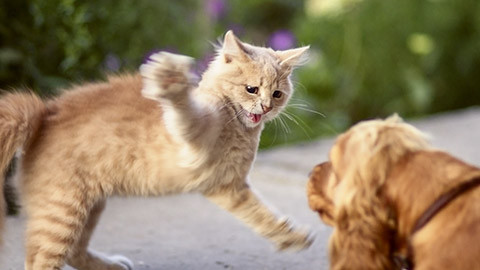
Not all animals get along well. You should consider animal compatibilities when housing or interacting with animals. When incompatible animals are in close proximity, there is a risk to the animals’ safety and wellbeing. Incompatible animals housed together will likely become stressed and go into ‘fight-or-flight’ mode. Fights between animals will likely result in injury to the animals or to the handlers who intervene. Animals may also injure themselves or their handler if they panic and try to escape.
Incompatible animals may include:
- individuals from different species, such as cats and dogs
- natural predator-prey combinations, such as a falcon and a parrot
- males and females of the same species when the females are in oestrus, such as mares in heat and stallions
- individuals with poor social skills or behavioural issues, such as a dog that shows fear-aggression towards all other dogs.
You can minimise the risk of fights between and panicked escape attempts from incompatible animals by preventing interactions between them. The following are some methods of preventing interactions between animals. The most appropriate method will depend on the animals involved in the situation.
Physically separate incompatible animals
Physical separation may involve housing and working with incompatible animals in different locations, such as a zoo housing zebra and giraffe together (compatible animals) but having a separate enclosure for the lions (incompatible with giraffe and zebra).
Physically barriers are often used during dog training classes to ensure an appropriate distance is maintained between animals and to minimise stressful triggers.
Visually separate incompatible animals
Visual separation means that incompatible animals are prevented from even seeing one another. This is an additional level of separation on top of physical separation. It is recommended when even the sight of the other animal is enough to trigger a ‘fight or flight’ response.
For example, the Victorian Code of Practice for the Management of Dogs and Cats in Shelters and Pounds (Revision 1) states that “dogs and cats must be physically separated by an opaque and impervious barrier” (Agriculture Victoria 2023).
Separate incompatible animals with time
Where a single location is required, incompatible animals can be kept separate by working with them at different times. For example, when shoeing horses, bring the mares in oestrus into the corral once all the other horses have been shod and moved back to their paddock.
Establish a safe environment
The first step in establishing a safe environment is to assess the physical areas where you will interact with the animal. This includes where the animal is housed, the location where the interaction will take place and the path you will use to transport the animal between sites.
Make sure to follow your specific workplace policies and procedures regarding safety checks and hazard assessments. However, the following checks are likely required in most animal care workplaces.
Check:
- if, where and when, the animal needs to be moved for the interaction to occur
- the floors and surfaces are clean, dry and clear of obstructions or hazards
- that all equipment is prepared, clean and in good working order
- the supplies of all products, equipment or medications required for the interaction
- the door of the enclosure or venue for damage
- where other animals are likely to be during the interaction.
Resolve any issues as you discover them and report any major WHS risks.
Next, assess the animal or animals you will be working with. This includes gathering information regarding the animals, such as general species or breeds, behaviours and other information about the specific individuals. When conducting training sessions, you also need to gather information about the handlers that may impact their safety. Information about the animals will help you decide the safest way to approach, work with or and handle the animals.
You will learn more about identifying and interpreting animal behaviour in Topic 2.
Personal protective equipment (PPE)
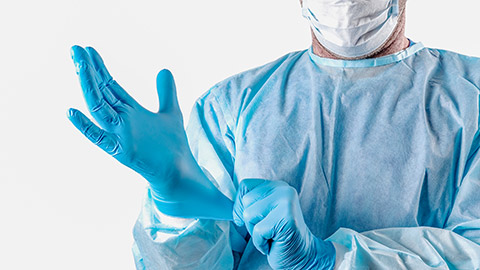
One way to minimise risk is to select and fit appropriate PPE for the task. The following table outlines some common items of PPE used in the animal care industry and the benefits of using them.
| PPE Item | Benefits to Wearer |
|---|---|
| Animal handling gloves/gauntlets | Protection from bites and scratches |
| Examination gloves (disposable plastic, latex, nitrile, etc.) | Protection from zoonotic diseases |
| Face masks or face shields | Protection from zoonotic diseases and contact with bodily substances. |
| Fluorescent or reflective vests | Provides high visibility to surrounding traffic, reducing the risk of a traffic incident |
| Non-slip, closed-in shoes | Protection from slipping, small items falling on feet and zoonotic diseases |
| Reinforced or steel-capped boots | Protection from rough or uneven surfaces or an animal stepping on the foot |
| Gumboots | Protection from zoonoses, rain, wet terrain, mud and animal waste |
| Scrub tops, disposable aprons or gowns (worn over uniform) | Protection from zoonotic diseases; keeps uniform clean |
| Sunscreen and protective general clothing, including wide-brimmed hats; collared, long-sleeved shirts; long pants; rain jacket with hood; warm clothing | Protection from prolonged exposure to UV radiation, heat, cold, rain, rough or wet terrain and insects |
Not all interactions with an animal require every item of PPE listed in the previous table. For example, a dog trainer would likely only require sunscreen, suitable footwear and clothing to protect them from UV and the weather. In contrast, a veterinary treating an animal suspected of being infected with a zoonotic disease would require gloves, a face mask and shield, a disposable gown, and appropriate footwear.
Consider the activity you need to perform with the animal and your risk assessment of the environment. Select the PPE that is appropriate for the situation and fit it correctly. Follow your workplace policies and guidelines regarding the PPE items required for the different animal tasks. For example, WorkSafe Queensland has developed guidelines for Selecting and using PPE in veterinary practice when working with animals suspected of being infected with the Hendra virus.
Disposable PPE
When working with an animal with a high risk of infectious disease or zoonoses, it is safest to wear single-use disposable PPE over the top of your uniform. Disposing of PPE between animals is the best way to prevent the spreading of infectious diseases. Make sure to dispose of your used PPE in a biohazard bin if you are working with animals that are known or suspected to be carrying an infectious disease.
The Australian Veterinary Association (AVA) recommends the following sequence for putting on disposable PPE:
- Wash your hands.
- Put on a disposable gown, ensuring that it covers the entire torso from neck to knees, with arms covered to the wrists.
- Put on a mask or respirator as required.
- Put on protective eyewear or a face shield as appropriate.
- Put on gloves, ensuring they cover the cuffs of the gown (AVA n.d.a).
The AVA provides guidelines and several resources for Veterinary personal biosecurity & PPE, including infographics for protecting yourself against animal diseases, hand hygiene, gloves and the recommended sequence for putting on PPE (Resources 1-4).
Gloves
Disposable gloves are a common item of PPE that should be worn during most animal care tasks and must be worn if there is a risk of coming into “contact with body substance or objects contaminated by body substances” (AVA n.d.b). The AVA recommends changing gloves and performing hand hygiene every time you:
- move from a dirty to a clean area or from dirty to clean procedures on the same animal
- come in contact with blood, urine, faeces or other bodily substances
- are about to start working with a different individual animal
- are about to touch equipment not required during the interaction with the animal, such as a keyboard
- damage the gloves (AVA n.d.b.).
Wearing gloves is not a substitute for effective hand washingPhillips n.d.
Hand hygiene and handwashing
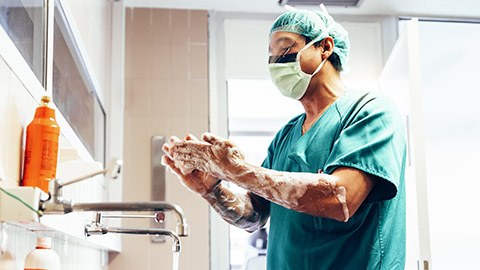
Hand hygiene is critical when working with animals. Hand hygiene is the general term applied to washing your hands.
The way you wash your hands will depend on the task you are about to perform. The four types of hand hygiene are:
- Routine handwash.
- Antiseptic handrub.
- Antiseptic handwash.
- Surgical antisepsis (Martin 2021).
Routine hand wash
Routine hand washing is when you wash your hands with non-antimicrobial soap and water. Routine hand washing is appropriate for tasks that have minimal risk of exposure to pathogens or contaminants.
You should use a routine hand wash before and after low-risk tasks such as:
- interacting with healthy animals
- completing reception duties
- before and after preparing food for animals
- grooming a healthy animal
- handling chemicals or medications
- cleaning low-risk areas, such as product shelving and windows
- eating your own food.
When conducting a routine handwash you should:
- Use soap and clean, running water
- Move or remove rings and jewellery to wash underneath them
- Rub your hands for at least 30 seconds to remove any particles and microorganisms
- Where possible, use a disposable paper towel to dry your hands and use the towel to turn off the tap
- Ideally, use liquid soap and wash the dispenser before refilling (Martin 2021).
Examine the following video, WHO: How to handwash? With soap and water (1:26 min), to learn more about the correct way to wash your hands in a routine handwash.
Antiseptic handrub
Antiseptic handrub sanitises your hands with an alcohol-based gel instead of soap. Unlike soap, you do not rinse the handrub off with water. Instead, any excess gel evaporates. Antiseptic handrub is often used when clean running water is not available.
It is important to remember that antiseptic handrub won’t clean your hands. It sanitises them. So, if your hands are dirty, you will need to wipe your hands clean before applying the handrub.
When using antiseptic hand rub:
- Remove all jewellery.
- Apply the manufacturer’s recommended quantity into a cupped hand.
- Rub the palms of your hands together.
- Rub your right palm over the back of your left hand with fingers interlaced and vice versa.
- Rub between your fingers by interlacing your fingers, palm to palm.
- Rub the backs of your fingers by interlacing your finger, right palm to the back of your left hand and vice versa.
- Rub your right thumb by clasping it in your left hand and rotating, and vice versa.
- Rub your hands by rotating and rubbing backwards and forwards with clasped fingers of the right hand in the left palm and vice versa.
- Continue to rub your hands together until they are dry. Do not rub or wash off excess product (Martin 2021).
The following video, WHO: How to handrub? With alcohol-based formulation (1:18 min), demonstrates how to sanitise your hands using an alcohol handrub.
Antiseptic handwash
The third type of hand hygiene routine is known as an antiseptic handwash or the clean technique. This type of hand hygiene uses antimicrobial soap and clean water and is used to remove or destroy any microorganisms that may be present on your hands.
You should perform an antiseptic handwash in situations such as:
- before clipping fur and preparing skin for surgery
- after exposure to an animal with a confirmed or suspected zoonotic or contagious disease
- after exposure to blood or other bodily fluids
- after cleaning litter trays or disposing of faeces
- after handling pathology samples.
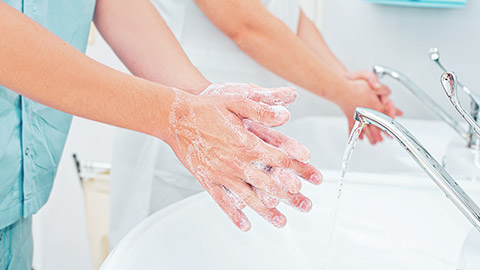
When using the antiseptic handwash routine, remove any jewellery then:
- Wet your hands and wrists. Position your hands lower than your elbows to allow water to flow towards the fingertips.
- Cover all areas of hands with soap.
- With firm rubbing and circular motions, wash the palms and backs of your hands, every finger individually, and your wrists and forearms. Continuously rub your hands, wrists and forearms for at least 30 seconds.
- Rinse thoroughly with clean water by letting the water flow from your forearms towards your fingertips.
- Using a paper towel, pat your hands dry, beginning with your fingers and moving upward towards your forearms. Dispose of the used paper towel immediately.
- If you need to turn the water off with your hands, use a piece of clean paper towel (Martin 2021).
Surgical antisepsis
Surgical antisepsis, or the sterile technique, is the fourth hand hygiene routine. As with antiseptic handwashing, surgical antisepsis uses antimicrobial soap. However, surgical antisepsis uses sterile water instead of tap water, involves a scrubbing brush, takes around 5 minutes to perform instead of 30 seconds, and you hold your hands higher than your elbows rather than the other way around.
As the name suggests, surgical antisepsis is typically used before performing surgery.

The key steps of the surgical antisepsis handwashing technique are:
- Remove all jewellery.
- Wet your hands with sterile water at or close to body temperature (approximately 37°C).
- Wash your hands using antimicrobial soap and/or povidone-iodine.
- Clean under your fingernails with a nail file.
- Hold your hands higher than your elbows at all times to prevent bacteria-laden soap and water from dripping down and contaminating your hands.
- Scrub each side of each finger, between your fingers, the fronts and backs of both hands, both wrists and both forearms for at least 4 minutes.
- Rinse your hands, wrists and forearms by passing them through running water, making sure the water only flows in one direction - from fingertips to elbow.
- Enter the operating room holding your wet hands above your elbows.
- Dry your hands and arms using a sterile towel (Martin 2021).
Access the following video, Anatomical Surgical Hand Scrub (5:09 min), which demonstrates excellent antisepsis handwashing technique.
Select appropriate equipment to secure the animal
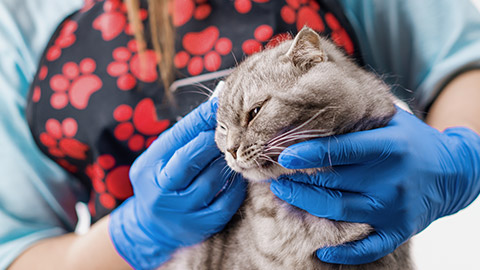
The most effective tools to secure and restrain an animal are your hands. They are sensitive to the amount of pressure applied to the animal as well as to the animal’s movements. This means you can adjust your hand pressure or position quickly and as required. You can also use your hands to stroke or hold an animal to help calm them.
Although extremely versatile and useful, hands are vulnerable to injury. Depending on the situation, it may be necessary to wear padded gloves or gauntlets to protect your hands from bites and scratches.
When securing larger animals, or those displaying fearful or defensive behaviours, you may require other equipment to ensure your own safety as well as that of the animal. However, in all situations, the lowest level of restraint needed to ensure you and the animal are safe is always the best option.
The following listed equipment is commonly used for catching, securing and restraining animals:
- gloves
- towel, sheet, tea towel, blanket or clothing
- collar
- leash, lead or harness
- muzzle
- hessian or calico bag, or pillowcase
- cage or box trap
- plastic container, bucket or clean ice cream container for aquatic animals
- halter and/or length of rope for a horse or livestock
- cat-nabber or catch net
- catch or control pole.
If equipment is needed to catch, secure or restrain an animal, make sure you have the equipment ready before you approach the animal. Check that the equipment is clean and in good working order. Dirty, damaged equipment must not be used until it is cleaned, properly repaired or replaced.
If you need equipment to secure an animal, seek assistance. It is likely a second pair of hands will also be required.
Gloves and gauntlets
There are many different gloves specifically designed for handling dogs, cats, birds and other animals that protect your hands from bites and scratches. Some gloves only reach the wrist, while others (often called gauntlets) cover up to the elbow.
If gloves are required, choose the most appropriate type for the animal you are handling, such as the leather falconry gauntlet shown in the following image.
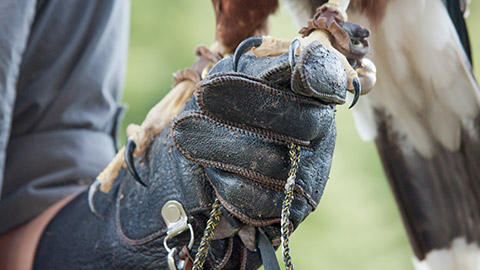
Collars, harnesses, leashes and leads
Collars, harnesses, leashes and leads are very common tools used to secure and handle animals. You can either hold the animal directly by the collar or harness, or by the lead or leash that may be attached to the collar or harness. While dogs are commonly trained to walk wearing a collar and leash, many other animals are trained to wear a harness, including cats, rabbits and ferrets. Larger animals, such as horses and livestock, may also be led using a halter and lead rope.
Leashes and leads can be abused. If an animal struggles with the leash, do not drag or pull them. This may cause more stress or even injure the animal. If the animal starts to become stressed, struggles and pulls or jerks away from you, this may indicate they have not been leash-trained. In this situation, pause to let the animal calm down and get used to the sensation of the collar, harness and leash around its neck or body. Once the animal has calmed down, try again while reassuring them.
In some circumstances, you can encourage the animal to move with you with a verbal, “Let’s go” or even lure them with a treat. However, if the animal still shows signs of fear and refuses to walk, and if it is safe to do so, you could carry them. Assess the animal’s demeanour. If they show signs of stress or aggression, it may be necessary to muzzle or restrain them prior to lifting and carrying.
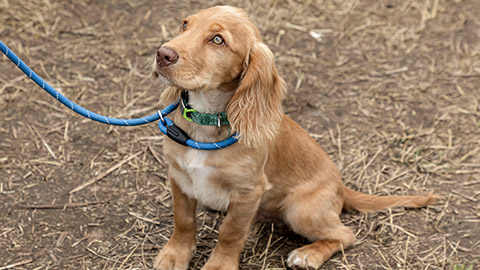
A slip lead (as shown in the previous image) can be used without attaching it to a collar or harness and should be used when moving dogs around an animal care workplace. They can also be used when transferring an animal into your care, such as at a veterinary clinic or boarding facility. That way, you can return the client’s lead to them so that it is not lost during the animal’s stay. You do not typically need to transfer onto a different lead in the case of animal training classes – unless what the handler has on the animal is not appropriate for the safety and wellbeing of the animal.
Muzzles
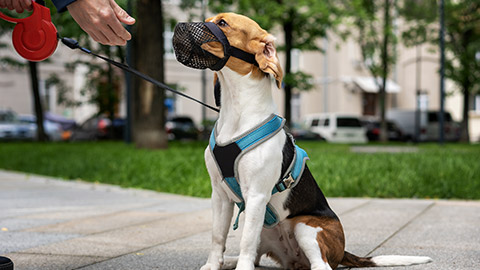
Muzzles are most commonly used on dogs but can be applied to other species. A muzzle restricts the movement of the animal’s mouth and prevents them from biting or picking up objects with its mouth. Muzzles are most often associated with preventing dogs from biting the handler. However, they are also useful training tools that help prevent dogs from picking up harmful objects or eating something that may be harmful to the dog.
Muzzles designed for cats tend to cover their eyes as well as their mouth. These types of muzzles help to reduce visual stimulation. Some cats find this very calming, which further protects the handler from potential injury.
A leash, a strip of gauze or other material may be used as a temporary muzzle. Wrap the muzzle tightly enough to prevent the animal from removing it, but not so tight as to cause the animal discomfort or restrict its breathing.
Commercial muzzles are available in a range of different sizes, styles and materials. Ensure you select the most appropriate muzzle for the animal that requires it and fit it correctly. A poorly fitted or constructed muzzle may cause the animal injury and lead to a false sense of security in the handler, increasing the possibility of being bitten. Even when properly secured, use appropriate handling techniques to prevent injury from or to an animal who resists the muzzle.
Towel, blanket or clothing
Towels, sheets, tea towels, blankets and even clothing are extremely useful animal handling tools, particularly for small animals. Covering the animal’s eyes, head or even its entire body can help decrease the animal’s stress. Wrapping limbs close to the animal’s body can help the handler control the animal’s movement and prevent bites, kicks and scratches.
Cat-nabber or catch net
A cat-nabber or a catch net, most commonly used for catching cats, is designed to be eased into a cage or confined area, then restrain and control an animal without directly touching it. The nets can then be used to transfer the animal from one area to another without injury to the animal or handlers. Catch nets are typically only used if the animal is too aggressive or fractious to be handled directly.
A cat-nabber or catch net may also control an animal when administering intramuscular injections or basic health checks, which can be given through the net.
Catch or control pole
A catch or control pole is typically used as a last resort for restraining an animal. The poles are only used to handle extremely aggressive, wild or stray dogs safely. If the animal is not a stray, you should ask the owner to fit a muzzle and leash rather than resort to a control pole.
A catch or control pole can be used like a long-distance hand to make contact first contact with the animal. Used appropriately, they are an effective tool. However, inappropriate or unskilled use can cause serious injury to the animal or the person using it. The catch or control pole may further distress an upset animal and should only be used when your safety or the safety of the animal is genuinely threatened.
Seek a second opinion and assistance if you think an animal is aggressive enough to warrant using a catch or control pole. It is not safe to interact with an animal on your own in these circumstances.
Complete the following six (6) activities to check your knowledge and understanding of the key concepts of this topic. You may repeat this activity as often as you like. Use the arrows to move between the different activities.
